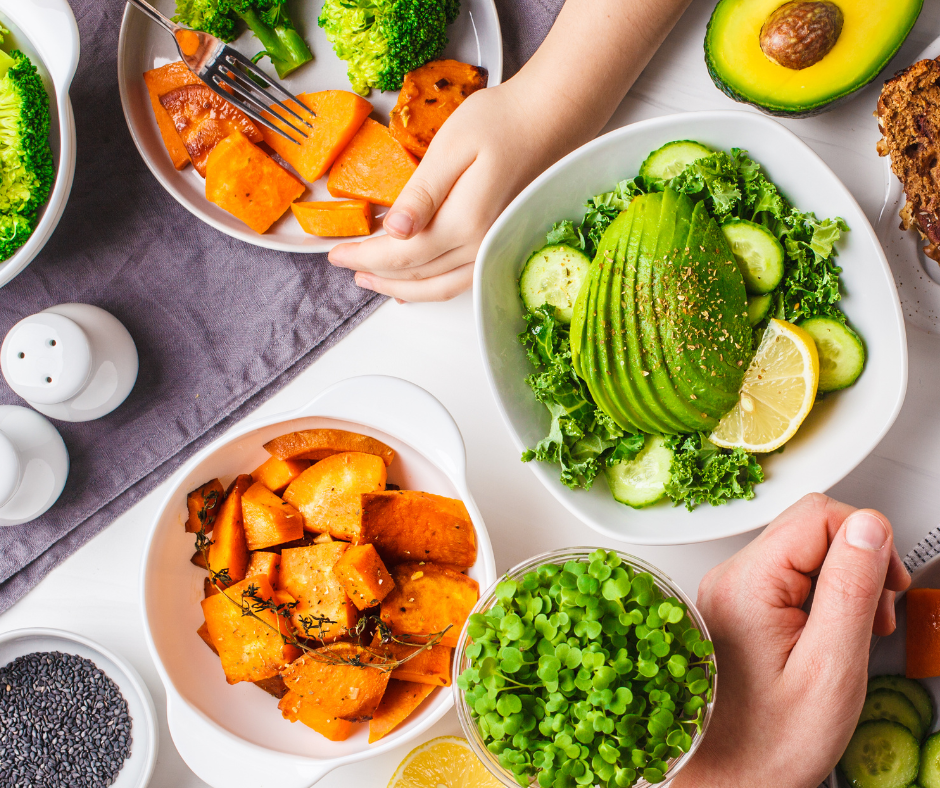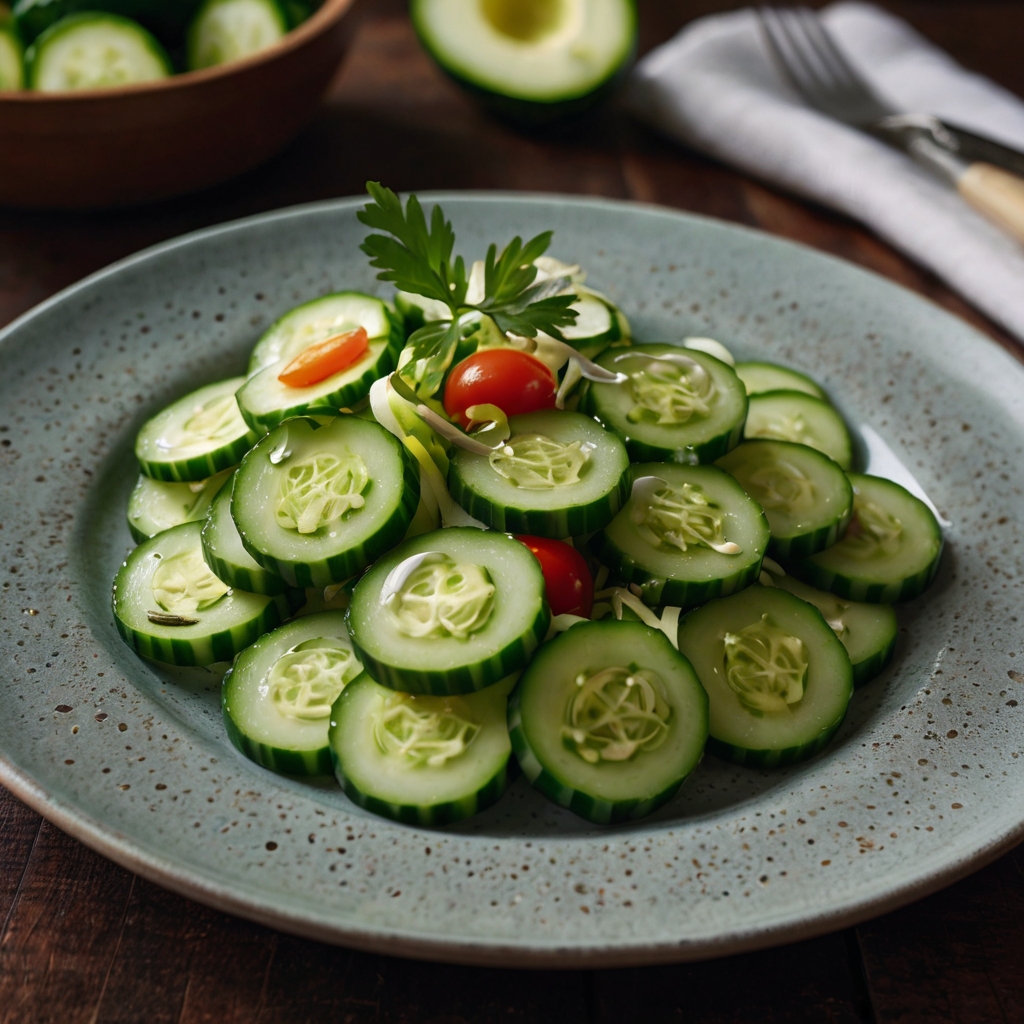Who says desserts have to ruin your diet? Low Calorie Desserts are gaining traction among health-conscious eaters, offering all the flavor without the calorie overload. These treats are perfect for satisfying cravings while supporting your wellness goals. With creative recipes and smarter ingredients, you can indulge without the guilt. Let’s uncover why these desserts are reshaping how we approach healthy eating.
Understanding Low Calorie Desserts
Desserts don’t have to be your nutritional enemy. With the rise of Low Calorie Desserts options, you can enjoy sweet treats while sticking to your health goals. Let’s explore what makes a dessert low calorie and why these choices are a favorite for many.
Defining Low Calorie Desserts
A dessert is typically considered “low calorie” when it contains fewer than 150-200 calories per serving. This guideline can vary depending on dietary preferences or the kind of dessert. For instance:
-
- A low calorie fudge popsicle might hover around 80-100 calories.
-
- Low calorie baked goods, like cookies or brownies, often range between 120-150 calories per piece.
-
- Fruit-based desserts, like a bowl of fresh berries with whipped topping, can clock in well below 100 calories, depending on portion size.
Low Calorie Desserts achieve this by either reducing the use of calorie-dense ingredients, using alternatives like low-fat dairy, sugar substitutes, or packing in volume with naturally low-cal items like fruit or gelatin. Adjusting portion sizes is another essential factor in keeping the calorie count low.
If you’re interested in experimenting with recipes or want more examples of Low Calorie Desserts ideas, check out EatingWell’s collection of low-calorie desserts for inspiration.
Health Benefits of Low Calorie Desserts
Why do people gravitate toward Low Calorie Desserts ? Because they’re a win-win: you satisfy your sweet tooth without blowing your calorie budget. Here are a few key benefits:
-
- Weight Management: Enjoying Low Calorie Desserts allows you to indulge without derailing your wellness journey. Unlike traditional desserts, they’re less likely to rack up empty calories, aiding in calorie control.
-
- Reduced Sugar Intake: Many Low Calorie Desserts options incorporate natural sweeteners or smaller amounts of sugar, helping reduce the risk of sugar-related health issues like type 2 diabetes.
-
- Sweet Craving Satisfaction: Let’s face it—cravings happen. Low Calorie Desserts gives you a guilt-free way to satisfy that inner voice whispering “ice cream” or “chocolate.”
-
- Improved Energy Levels: High-calorie, sugary desserts can cause energy crashes, but lighter options with balanced nutrients can keep you feeling steady and focused.
Some Low Calorie Desserts are also nutrient dense. For example, options like fruit parfaits or chia seed puddings pack in antioxidants, fiber, and even heart-healthy fats. For more insights on the potential to eat dessert while staying healthy, Healthline’s guide to healthy desserts is a great resource.
Low calorie Dessets
doesn’t mean skimping on flavor or satisfaction—it’s proof that indulgence and health can go hand-in-hand.
Popular Low Calorie Desserts Recipe
Desserts don’t have to mean sacrificing your health goals. With the right ingredients and a little imagination, you can create Low Calorie Desserts treat that impress your taste buds and help you stay on track. Below are some crowd-favorite recipes that are simple to make and packed with flavor.
Greek Yogurt Parfait
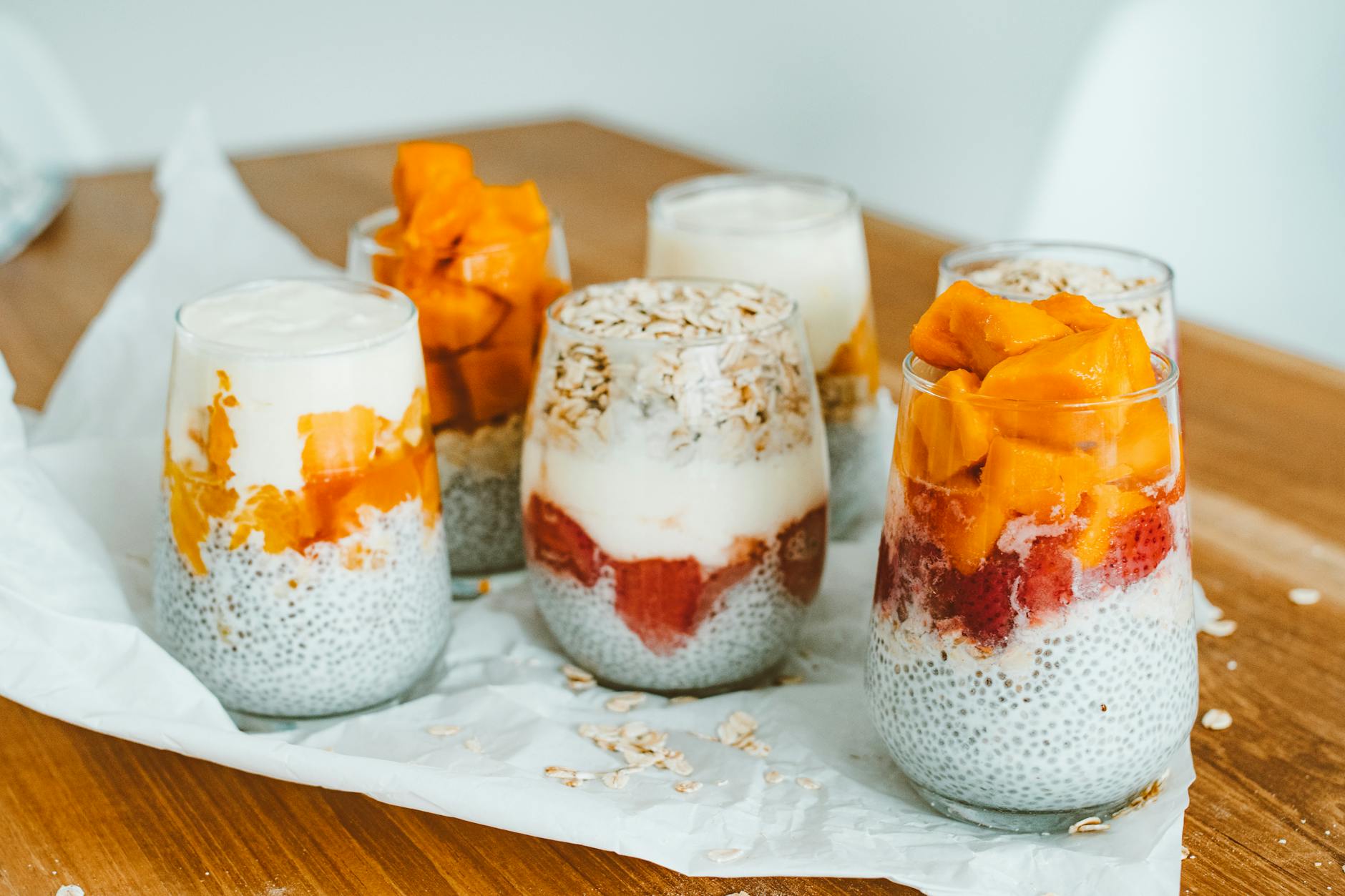
Photo by ROMAN ODINTSOV
One of the easiest and most nutritious desserts is a Greek yogurt parfait. Here’s how you can make one:
Ingredients:
-
- 1 cup of plain, non-fat Greek yogurt
-
- ½ cup of fresh berries (strawberries, blueberries, or raspberries)
-
- 2 tablespoons of granola or crushed nuts
-
- Optional: drizzle of honey or low-calorie sweetener
Steps:
-
- Layer Greek yogurt, berries, and granola in a glass or bowl.
-
- Repeat until you fill the container.
-
- Top with a drizzle of honey for added sweetness, if desired.
At roughly 150 calories per serving, this dessert packs protein, antioxidants, and a satisfying crunch.
Berry Sorbet
If you’re a fan of ice cream, berry sorbet is your guilt-free alternative. All you need are a few simple ingredients.
Ingredients:
-
- 2 cups of frozen berries (your choice: strawberries, raspberries, or mixed)
-
- 1 tablespoon of lemon juice
-
- 1-2 tablespoons of honey or sugar substitute
Steps:
-
- Toss frozen berries, lemon juice, and sweetener into a blender.
-
- Blend until smooth, stopping to scrape down the sides as needed.
-
- Serve immediately or freeze for a firmer texture.
This treat is a no-brainer at about 100 calories per serving, depending on the fruits and sweetener used.
For more inspiration on sorbet recipes, check out BBC Good Food’s collection of low-calorie desserts.
Chia Seed Pudding
Love creamy desserts? Chia seed pudding is versatile, nutritious, and ridiculously easy to tweak.
Ingredients:
-
- 2 tablespoons of chia seeds
-
- ½ cup of unsweetened almond milk
-
- 1 teaspoon of vanilla extract
-
- 1 teaspoon of maple syrup or stevia (optional)
-
- Fruit, nuts, or coconut flakes for topping
Steps:
-
- Mix chia seeds, almond milk, vanilla, and sweetener in a bowl.
-
- Let it sit for at least 4 hours or overnight, stirring occasionally.
-
- Add your favorite toppings before serving.
The pudding is rich in fiber, omega-3s, and protein, with about 120 calories per serving. Plus, it’s easy to add fruit jams or cocoa powder for extra flavor.
Baked Apples
This warm dessert feels indulgent, yet it’s surprisingly light. It’s perfect for fall evenings or anytime you want something cozy.
Ingredients:
-
- 1 medium apple (Fuji or Granny Smith work great)
-
- 1 teaspoon of cinnamon
-
- 1 teaspoon of sugar or sugar substitute
-
- 2 teaspoons of crushed nuts or oats
Steps:
-
- Core the apple and fill it with a mix of cinnamon, sugar, and nuts/oats.
-
- Bake at 375°F (190°C) for about 20-30 minutes, or until soft.
With around 120 calories per serving, this dessert feels like comfort food while keeping your sugar intake low.
Chocolate-Dipped Strawberries
Chocolate lovers, rejoice! This elegant dessert is as easy to make as it is to enjoy.
Ingredients:
-
- 10 fresh strawberries
-
- 2 ounces of dark chocolate (70% cacao or higher)
-
- Optional: crushed nuts or shredded coconut for garnish
Steps:
-
- Melt the chocolate using a microwave or double boiler.
-
- Dip each strawberry into the chocolate and place it on parchment paper.
-
- Sprinkle with optional toppings and refrigerate until set.
Each strawberry has only about 35-50 calories, depending on the chocolate used. Opt for a low-calorie or sugar-free variety for an even lighter treat. For other chocolate dessert ideas, visit EatingWell’s low-calorie dessert recipes.
These recipes prove that healthy eating and dessert can coexist beautifully. Feel free to experiment with the ingredients to make the recipes your own!
Tips for Creating Low Calorie Desserts
Transforming your desserts into healthier, low-calorie versions doesn’t mean sacrificing taste. By making smarter ingredient swaps and embracing techniques that highlight natural flavors, you can enjoy desserts guilt-free. Let’s explore some practical tips to elevate your dessert game while keeping calories in check.
Use Natural Sweeteners
Sweetness doesn’t have to come from sugar alone. Natural alternatives often bring unique flavors and additional nutrients to your desserts. Here are a few excellent options:
-
- Honey: A small amount goes a long way, offering a rich, almost floral sweetness that complements baked goods and smoothies.
-
- Agave Nectar: This syrup has a low glycemic index, making it a great choice for steady energy release.
-
- Fruit Purees: Mashed bananas, applesauce, or blended dates can replace sugar while also adding moisture to recipes.
These swaps not only trim calories but also reduce processed sugar while boosting flavor naturally. For more ideas, check out BBC Good Food’s low-calorie dessert recipes.
Incorporate Healthy Ingredients
The key to a healthy, indulgent dessert lies in the ingredients. Here’s how to step up your dessert game without piling on empty calories:
-
- Whole Grains: Substitute white flour with whole grain options like oats, whole-wheat flour, or almond flour for added fiber.
-
- Fruits: Fresh, frozen, or dried fruits are versatile, adding sweetness and nutrients naturally.
-
- Nuts and Seeds: While calorie-dense, small portions of almonds, walnuts, or chia seeds provide healthy fats and a satisfying crunch.
Using high-quality ingredients satisfies your cravings without the need for heavy sugars or fats.
Portion Control Strategies
Dessert isn’t the enemy—it’s overindulgence. Portion control helps you enjoy your treats mindfully. Here are a few tricks:
-
- Use Smaller Dishes: Smaller plates or bowls make servings look larger, helping you feel satisfied with less.
-
- Pre-Portion Servings: Divide large desserts into individual servings, like cutting a cake into slices before serving.
-
- Miniature Versions: Opt for bite-sized treats, like mini muffins or cookies, to avoid overindulging.
It’s easier to manage calories when you control how much goes on your plate.
Flavoring Without Calories
Big flavors don’t need big calories. Some of the most flavorful ingredients come with zero calories, adding depth to your desserts:
-
- Spices: Cinnamon, nutmeg, and cardamom can enhance sweetness without sugar.
-
- Extracts: Vanilla, almond, and peppermint extracts are powerful and calorie-free additions.
-
- Citrus Zest: Lemon, lime, or orange zest brightens recipes with natural, fresh notes.
These simple additions can turn a plain dish into something extraordinary, without relying on sugar or fat.
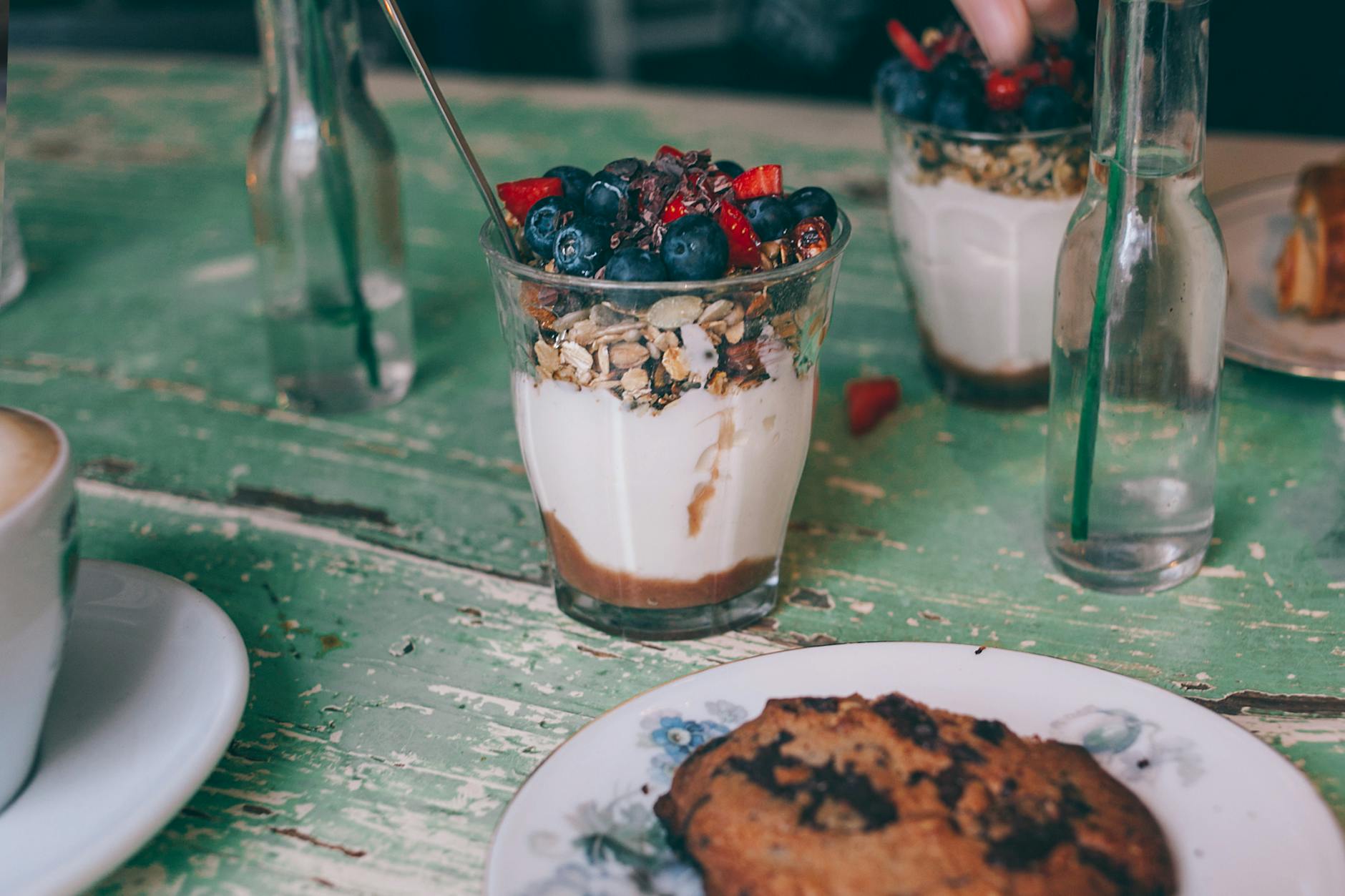
Photo by Maria Orlova
Experiment with Cooking Techniques
The way you prepare your dessert can significantly affect its calorie count. Experiment with these cooking techniques:
-
- Bake Instead of Frying: Baking uses less fat compared to frying, which soaks up oil.
-
- Steaming: Perfect for puddings or fruit desserts, it locks in flavor and moisture without added fat.
-
- Chilling and Freezing: Cold desserts, like sorbets or frozen yogurt, are often lower in calories than baked options.
Switching up how you cook can yield lighter yet equally satisfying results. For inspiration, explore EatingWell’s low-calorie dessert recipes.
By embracing these simple tips, you’ll find that desserts can be both indulgent and a healthy part of your diet.
Best Store-Bought Low Calorie Desserts
Store-bought desserts don’t have to mean blowing your calorie budget. Many brands offer delicious, low calorie treats that fit conveniently into busy lifestyles. Whether you’re craving ice cream, cookies, or cakes, here are some guilt-free options to consider.
Low-Calorie Ice Cream Options
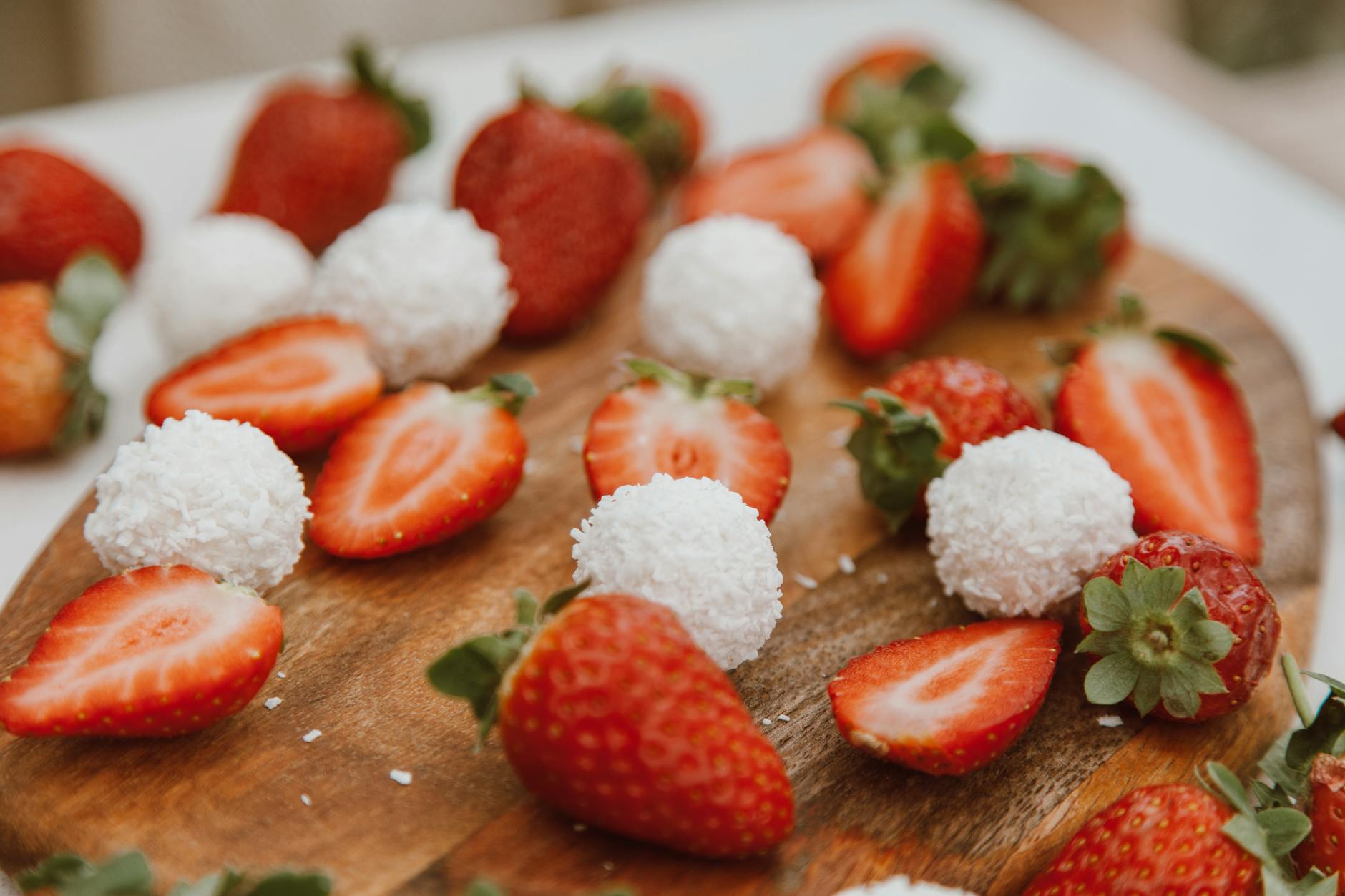
Photo by ROMAN ODINTSOV
If you think ice cream is off-limits, think again! Plenty of low calorie ice creams bring all the flavor without all the extras.
-
- Halo Top: Known for its wide variety of flavors, most servings are around 80–100 calories each.
-
- Yasso Greek Yogurt Bars: A creamy option with around 100 calories per bar and 5 grams of protein.
-
- Edy’s Slow Churned Ice Cream: With 120–130 calories per ½ cup serving, this is great for traditional ice cream fans.
-
- So Delicious Dairy Free Light Frozen Desserts: Non-dairy and under 120 calories per cup.
For more delicious choices, check Eat This, Not That!’s top low-calorie ice cream brands.
Lightened Up Cakes and Brownies
Bite into cake or brownies without the guilt! There are several pre-made and boxed mixes available:
-
- Duncan Hines Perfectly Moist Angel Food Cake Mix: Light and fluffy, just 140 calories per slice.
-
- Fit Bake Baking Mixes: Low-carb and sugar-free options that deliver moist, flavorful cakes at 120 calories per serving.
-
- Skinny Cow Fudge Brownies: Pre-packaged and ready to eat at about 120 calories each.
-
- Kodiak Cakes Protein-Packed Brownie Mixes: A heartier, protein-filled option with 150 calories per serving.
Need more ideas? Check out Eat This, Not That!’s guide to healthy cake mixes.
Guilt-Free Cookies
Cookies that are low in calories and still taste amazing? Yes, they exist! Here are some top picks:
-
- Simple Mills Almond Flour Cookies: Gluten-free and lightly sweetened with coconut sugar, around 130 calories per serving.
-
- HighKey Mini Cookies: Keto-friendly and 100 calories for a small portion size.
-
- Quest Nutrition Protein Cookies: Offers 15 grams of protein per cookie at around 120–150 calories each.
-
- Rip Van Wafers: A crispy, low sugar, and vegan option at 120 calories per pack.
Learn more about cookie choices in Gimme The Good Stuff’s store-bought cookie guide.
From freezer aisles to pre-packaged snacks, you can find satisfying sweets that make staying on track easier. Stay tuned for even more delicious ideas!
Conclusion: The Sweet Spot of Indulgence and Health
Low Calorie Desserts are more than just a trend—they’re a shift in how we view indulgence. They allow us to enjoy dessert without feeling restricted, blending taste and nutrition effortlessly. With so many recipes and store-bought options available, they make it easier than ever to stay on track with your health goals.
These desserts prove you don’t have to compromise. Whether you’re crafting chia seed puddings, savoring a Greek yogurt parfait, or choosing a guilt-free treat from the store, the balance of flavor and health is achievable. Excited to try something new? Explore unique low calorie dessert recipes or experiment with ingredient swaps to make your creations even healthier.
For more inspiration and tips, check out WebMD’s guide to healthier desserts or learn about how dessert can fit into a balanced diet on Time’s feature on dessert and health. These resources offer valuable insights and ideas for guilt-free indulgences.
STAY CONNECTED WITH US

